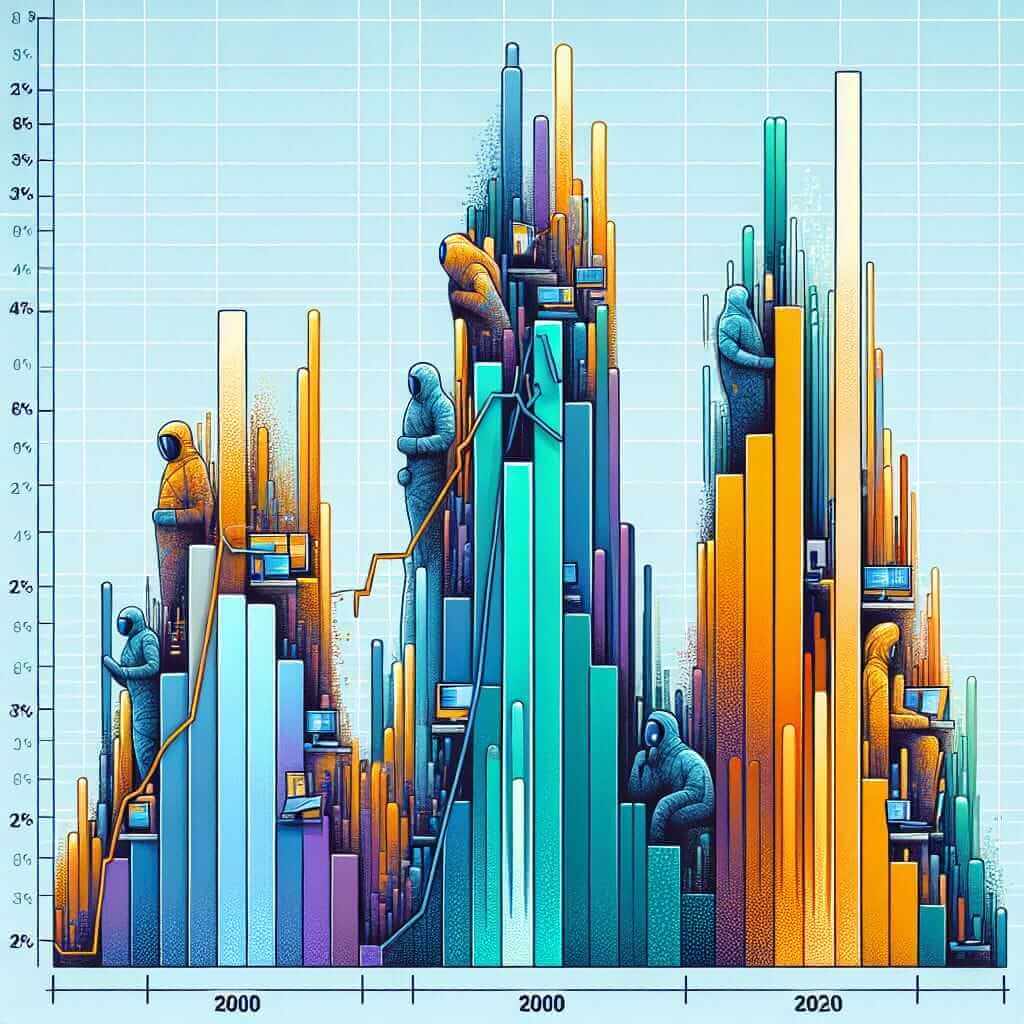The phrase “Remote Work Trends (2000-2023)” has increasingly appeared in IELTS Writing Task 1, reflecting its significance in today’s world. This essay will guide you through understanding, analyzing, and writing about this trend using real-world data and relevant vocabulary to help you achieve a Band 7+ score.
Potential IELTS Writing Task 1 Questions
Here are some potential IELTS Writing Task 1 questions you might encounter related to remote work trends:
- The graph below shows the percentage of people working remotely in three different countries from 2000 to 2020.
- The table illustrates the advantages and disadvantages of remote work as perceived by employees in a recent survey.
- The chart compares the reasons for choosing remote work between different age groups in the United States.
Sample IELTS Writing Task 1 Question and Model Answer
Let’s focus on the first question:
The graph below shows the percentage of people working remotely in three different countries from 2000 to 2020.
(Insert a bar chart depicting the following data. Ensure the chart is properly labeled with a title, axes labels, and a legend.)

| Year | Country A | Country B | Country C |
|---|---|---|---|
| 2000 | 2% | 1% | 3% |
| 2005 | 5% | 3% | 6% |
| 2010 | 8% | 7% | 10% |
| 2015 | 12% | 10% | 15% |
| 2020 | 25% | 18% | 22% |
Analysis of the Task
This task requires you to describe a bar chart showing the changes in the percentage of remote workers in three countries over two decades. You need to:
- Paraphrase the question: Rephrase the question in your own words to introduce the topic.
- Provide an overview: Highlight the main trends and any significant features.
- Analyze specific details: Compare and contrast data between countries, focusing on key years and changes.
Model Answer
The provided bar chart illustrates the proportion of employees engaging in remote work across three different nations (A, B, and C) spanning the period from 2000 to 2020.
Overall, the trend towards remote work exhibited an upward trajectory in all three countries over the two decades. While Country C initially had the largest percentage of remote workers, Country A witnessed the most dramatic increase, becoming the frontrunner by 2020.
In 2000, Country C had the highest proportion of remote workers at 3%, followed by Country A at 2%, and Country B at a mere 1%. Over the next decade, the figures rose steadily, with all countries experiencing roughly a 5% increase. However, between 2010 and 2020, the growth in remote work accelerated significantly.
By 2020, Country A witnessed a remarkable surge, reaching 25% of its workforce working remotely. Country C also saw considerable growth, reaching 22%, while Country B lagged slightly behind at 18%.
(Word count: 158 words)
Key Considerations for Writing Task 1
- Paraphrasing: Avoid simply copying the question. Use synonyms and different sentence structures to showcase your vocabulary.
- Data Accuracy: Report the data accurately and ensure your description matches the visual information.
- Grammar and Vocabulary: Use a range of grammatical structures (e.g., past simple, present perfect, comparatives, superlatives) and vocabulary related to trends (e.g., increase, decrease, fluctuate, plateau, surge, dramatic, gradual).
- Cohesion and Coherence: Use linking words and phrases (e.g., however, in contrast, similarly) to connect your ideas and create a smooth flow.
Vocabulary Focus
- Surge (n./v.): a sudden and great increase (e.g., “The pandemic led to a surge in remote work.”)
- Trajectory (n.): the path followed by something (e.g., “The upward trajectory of remote work is expected to continue.”)
- Proportion (n.): a part or share of a whole (e.g., “The proportion of remote workers varies across industries.”)
- Lag behind (v.): to make less progress than others (e.g., “Some companies are lagging behind in adopting remote work policies.”)
- Witness (v.): to show or experience a particular event or situation (e.g., “The past decade has witnessed a significant shift towards remote work.”)
Conclusion
Mastering IELTS Writing Task 1 requires a combination of analytical and language skills. By understanding the nuances of the task, practicing with sample questions and data, and developing a strong vocabulary, you can confidently approach this section and aim for a Band 7+ score. Remember to analyze trends clearly, use data accurately, and present your writing in a cohesive and grammatically correct manner.